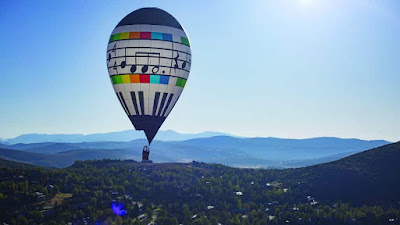Adventure Guide: Up In The Air
There really are countless ways to enjoy the Wasatch Mountain Range. You can slide down them when it’s snowing, or bike down them when it’s warm. You can hike them, camp in them or wildlife-watch in them. Many of the most adventurous among us have done all of that and more. Think you’ve seen it all? Think again. One of the truly unique ways to enjoy the mountains is from above! In a hot air balloon! You’ve seen our gorgeous mountains every other way; from the cozy confines of a hot air balloon, you can gain a whole new appreciation for them.
So, where to begin? Thankfully, this is not a new idea, and there are several hot air balloon guides that will take you up and blow your minds. One thing to keep in mind, though, is that this activity takes some planning, especially in the time of COVID-19. Many hot air balloon touring companies are limiting trips to private group-only to reduce interactions between strangers. So if you want to float the friendly skies, you’ll want to put your own group together (preferably already within your quarantine bubble!) and make a reservation ahead of time.
Here are two of your options for getting into the skies above Park City:
Bigfoot Balloons
385-285-5899
Bigfoot
Balloons offers one-hour flights and they leave from 6065 Silver Creek
Drive in Park City. You’ll cruise at 1,500 feet and, as is hot air
balloon tradition, cap off the adventure with a champagne toast!
Skywalker Balloon Company
801-824-3934
While
Skywalker offers flights from Ogden, Heber and St. George, it calls the
Park City tour its “signature” European mountain experience. Flights
leave at sunrise, and groups meet at the Best Western Landmark Plus,
6560 N Landmark Drive. Increased vehicle and equipment sanitization is
in place, as well as free masks and hand sanitizer for all passengers.


